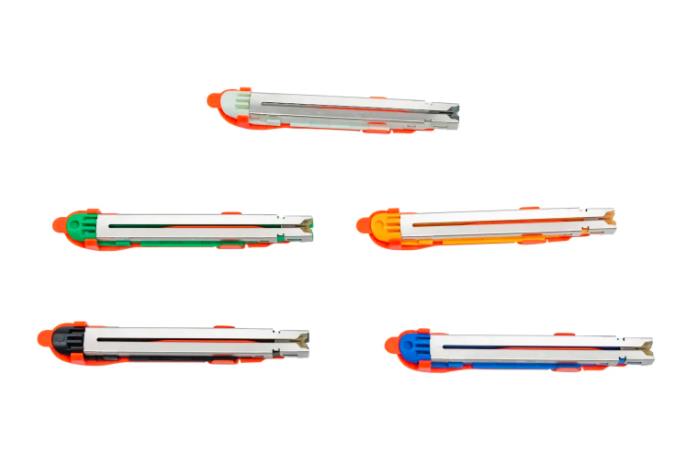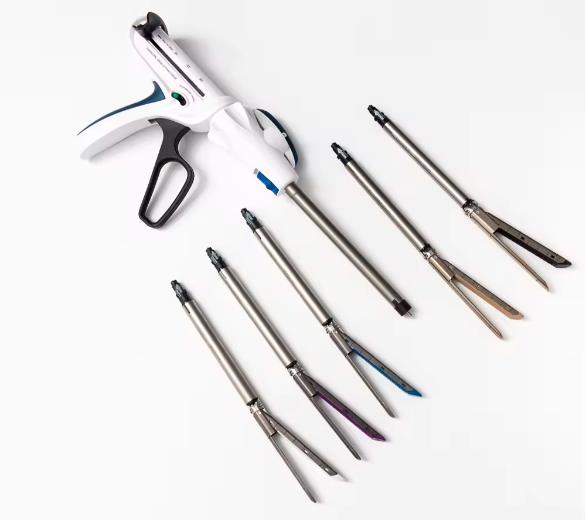Surgical staplers have become an indispensable tool in modern surgery, playing a vital role in both open and minimally invasive procedures. These devices, along with some accessories such as the linear cutter reload, also allow surgeons to quickly and efficiently cut and staple tissue during complex surgeries, thereby reducing surgical time and improving patient outcomes. Among the various types of staplers, linear cutter staplers stand out for their ability to cut and staple tissue simultaneously, making them an essential tool in procedures such as gastrointestinal, thoracic, and colorectal surgeries.

As surgery continues to move toward minimally invasive techniques, the demand for precision instruments such as linear cutters has grown significantly. A key innovation that has made these tools more efficient and cost-effective is the development of reloadable stapler cartridges, which allow surgeons to perform multiple procedures with a single device.
A linear cutter stapler is a surgical device used to simultaneously cut and staple tissue. It is particularly useful in procedures that require the division of organs or tissues while ensuring that the remaining tissue is sealed securely. These staplers are commonly used in a variety of surgeries, including:
Gastrointestinal surgeries: To remove sections of the bowel or stomach.
Thoracic surgeries: To resect lung tissue.
Colorectal surgeries: For procedures like anastomosis (reconnecting two parts of the intestine).
The stapler features two rows of staples on either side of the cutting blade. When activated, the blade cuts through the tissue, and the stapler places staples on both sides to close the cut edges, preventing leaks and promoting healing.

Linear cutter staplers are designed for precision and efficiency. The mechanism of these staplers includes:
Cutting blade: The blade is positioned between two rows of staples. When deployed, the blade cuts through the tissue, creating a clean incision.
Stapling mechanism: Simultaneously, two staggered rows of staples are placed on either side of the cut, ensuring secure closure of the tissue and reducing the risk of leaks.
Reloadable cartridge: The stapler’s reloadable cartridge allows the surgeon to replace the staple load without changing the entire device, enhancing the versatility and cost-effectiveness of the instrument.
The ability to cut and staple in one motion reduces the risk of complications like bleeding and infection, making these staplers a preferred option in many surgical settings.
Reloads for linear cutters are cartridges that contain both the cutting blade and the staples. Once a staple load is used, the cartridge can be removed and replaced with a fresh reload, allowing the surgeon to continue operating without needing a new stapler.
These reloads come in different sizes and staple heights to accommodate various tissue thicknesses and surgical needs. The ability to reload a stapler rather than replacing the entire device offers several advantages:
Cost savings: Reloadable systems reduce the cost per surgery compared to single-use staplers.
Increased efficiency: Surgeons can perform multiple actions without the need to change instruments frequently.
Customization: Different reloads can be selected based on the specific tissue and procedure, offering more versatility during surgery.
There are several types of linear cutter reloads available, each designed to match specific surgical needs:
Staple height: Reloads come with varying staple heights to match the thickness of the tissue being stapled. Thicker tissues, such as the stomach or bowel, require taller staples, while thinner tissues can use shorter staples.
Reload size: The length of the reload determines how much tissue can be cut and stapled at once. Common reload sizes include 45mm, 60mm, and 80mm.
Color coding: Many manufacturers use color coding to differentiate between reload sizes and staple heights, helping surgeons quickly identify the right reload for the procedure.
Some of the most common reloads are designed for single use, while others are part of a multi-use system that can be reloaded several times throughout the surgery.
Linear cutter staplers and their reloads are used in various surgical procedures across different specialties:
Gastrointestinal surgery: In bariatric surgeries like gastric bypass, linear cutters are used to divide the stomach and intestines while securely closing the edges with staples.
Thoracic surgery: These staplers are crucial for lung resections, where precise cutting and stapling of delicate lung tissue are required.
Colorectal surgery: For procedures such as colectomies (removal of part of the colon), linear cutter staplers provide a secure closure of the resected bowel, reducing the risk of leaks.
Selecting the appropriate linear cutter reload depends on several factors:
Tissue type and thickness: The reload’s staple height should match the tissue thickness to ensure a secure closure without damaging the tissue.
Size of the surgical area: Larger reloads may be necessary for procedures involving extensive tissue resection, while smaller reloads are better suited for more delicate, confined areas.
Compatibility: Not all reloads are compatible with every stapler. It’s important to ensure that the reload matches the specific linear cutter instrument being used.
Using reloadable linear cutter staplers offers several advantages:
Cost-effectiveness: Reloadable staplers can significantly reduce the overall cost of surgical procedures by minimizing the need for new staplers after each use.
Environmental impact: Reloadable systems produce less medical waste compared to single-use staplers.
Versatility: Different reloads can be used for various tissues and procedures, providing greater flexibility for surgeons.
Several prominent manufacturers produce high-quality linear cutter reloads:
Ethicon: Known for its innovative staplers and reloads, including the popular ECHELON line, which features a wide range of reload options for different tissue types.
Medtronic (Covidien): Offers the Tri-Staple technology, which provides different staple heights in a single reload, allowing for better tissue compression and security.
CONMED and B. Braun: These companies also provide reloadable staplers and cartridges that are widely used in hospitals around the world.
Each brand offers unique features, such as enhanced ergonomics, multiple staple height options, and advanced cutting technology.
Recent innovations have improved the safety and efficiency of linear cutter reloads:
Multi-row stapling: Some staplers now feature multi-row stapling, which improves tissue compression and reduces the risk of leaks.
Robotic-assisted stapling: With the rise of robotic surgery systems, linear cutters are being adapted for robotic platforms, offering even greater precision and control.
Enhanced safety features: New reload designs focus on preventing staple misfires and ensuring consistent staple formation, reducing complications during surgery.
Reloading and using a linear cutter stapler requires precision and attention to detail. Follow these steps:
Inspect the device: Ensure that the stapler is in good condition and that the reload matches the required specifications for the surgery.
Load the reload: Carefully insert the new reload into the stapler, ensuring it clicks securely into place.
Test the stapler: Before using it on tissue, test the stapler on a surgical cloth or sponge to ensure proper function.
Cut and staple the tissue: Align the stapler with the tissue, ensuring that both sides of the tissue are properly positioned for stapling and cutting.
Following these steps helps ensure the success of the procedure and minimizes the risk of complications.
To guarantee the safety of linear cutter reloads, it’s essential that they meet regulatory standards, including:
ISO 13485 certification: Ensures that the manufacturing process meets international standards for medical devices.
CE marking: Required for products sold in the European Union, indicating compliance with safety regulations.
FDA approval: Necessary for products sold in the United States, ensuring that the reloads are safe and effective for use in surgery.
The cost of linear cutter reloads depends on several factors:
Brand: Premium brands with advanced features, like Ethicon’s ECHELON or Medtronic’s Tri-Staple, tend to be more expensive.
Reload size and type: Larger reloads with higher staple heights cost more than smaller, simpler cartridges.
Volume discounts: Hospitals that purchase reloads in bulk can often negotiate lower prices.
On average, a single reload can cost between $50 and $300, depending on the brand and specifications.
What are the different sizes available for linear cutter reloads?
Common sizes include 45mm, 60mm, and 80mm, with varying staple heights for different tissue thicknesses.
How do I know which reload to use for my specific surgery?
The choice of reload depends on the thickness of the tissue being stapled and the specific procedure being performed.
Are linear cutter reloads compatible across different stapler brands?
No, reloads are typically brand-specific, so it’s important to use the correct reload for the stapler model.
What are the main advantages of using reloadable staplers?
Reloadable staplers are cost-effective, reduce waste, and offer greater versatility compared to single-use staplers.
Can linear cutter reloads be reused?
No, linear cutter reloads are designed for single-use and must be discarded after each procedure.
How do I ensure that my reloads are properly sterilized and safe to use?
Purchase reloads from reputable manufacturers and ensure that they are sealed and sterilized before use.
linear cutter reload are vital components of modern surgical stapling systems, providing precision, efficiency, and versatility in a range of procedures. By understanding the different types of reloads, their applications, and how to use them effectively, surgeons and medical teams can optimize surgical outcomes and improve patient care. With advances in technology and design, reloadable staplers continue to evolve, offering even greater performance and safety in the operating room.